Buddhism in Burma (Myanmar) is predominantly of the Theravada tradition, practiced by 89% of the country’s population. It is the most religious Buddhist country in terms of the proportion of monks in the population and proportion of income spent on religion. Adherents are most likely found among the dominant ethnic Bamar (or Burmans), Shan, Rakhine (Arakanese), Mon, Karen, and Chinese who are well integrated into Burmese society. Monks, collectively known as the Sangha, are venerated members of Burmese society. Among many ethnic groups in Myanmar, including the Bamar and Shan, Theravada Buddhism is practiced in conjunction with nat worship, which involves the placation of spirits who can intercede in worldly affairs.
Many Burmese families send their children to the monastery to receive a Buddhist education, learning the Pali Canon, the life story of Gautama Buddha, the 550 Jataka tales and most importantly the Ten Great Incarnations and the 38 Buddhist Beatitudes.
There has been a revival of monastic schools since the 1990s with the deepening economic crisis. Children from poor families that can ill afford fees, uniforms and books have renewed the demand for a free monastic education, and ethnic minorities such as the Shan, Pa-O, Palaung, Lahu and Wa are benefitting from this revival.
Buddhist monks, who are venerated throughout Burmese society, are approximately 500,000 strong. Nuns form an additional 75,000. Monks belong to one of two primary monastic orders. Thudhamma Nikaya (88% of Buddhist monks) and the more orthodox Shwegyin Nikaya (7% of Buddhist monks). It is important to note that Burmese monastic orders do not differ in doctrine, but in monastic practice, lineage and organizational structure.
The overwhelming majority of Burmese monks wear maroon-colored robes (sometimes ochre), unlike in neighboring countries like Thailand, Laos and Sri Lanka, where monks commonly wear saffron-colored robes. Nuns (with shaved heads) are most commonly seen wearing pink robes.




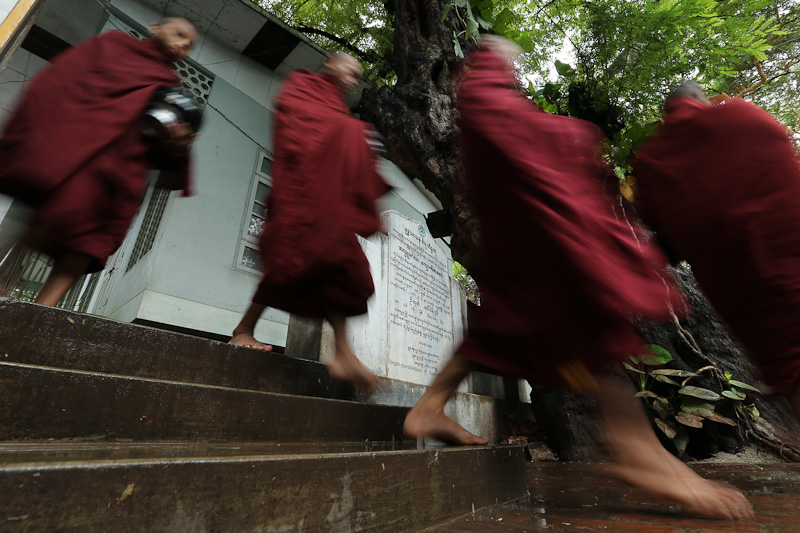
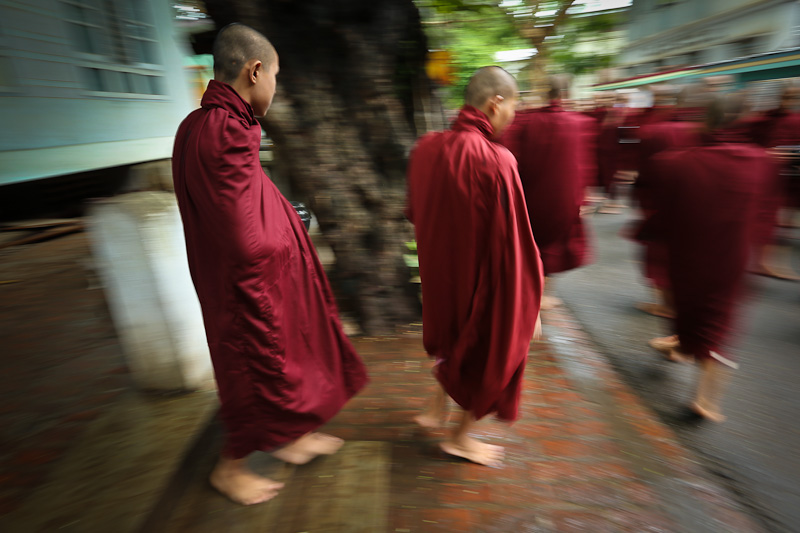

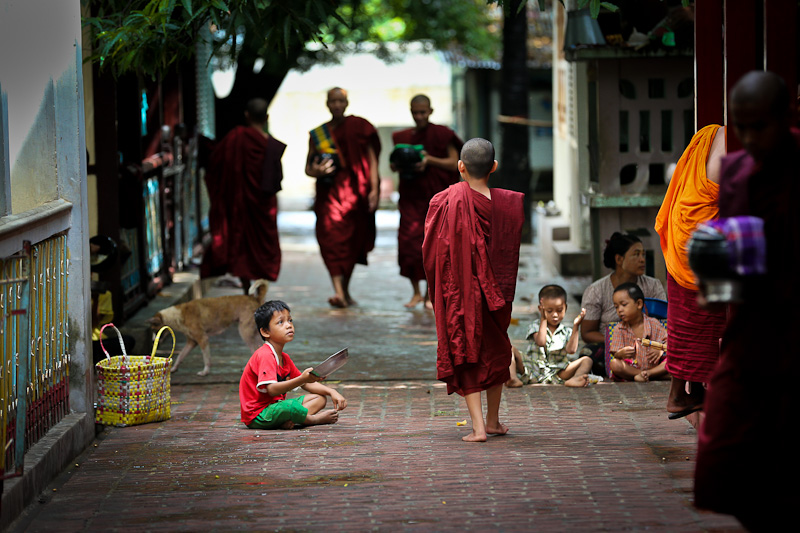

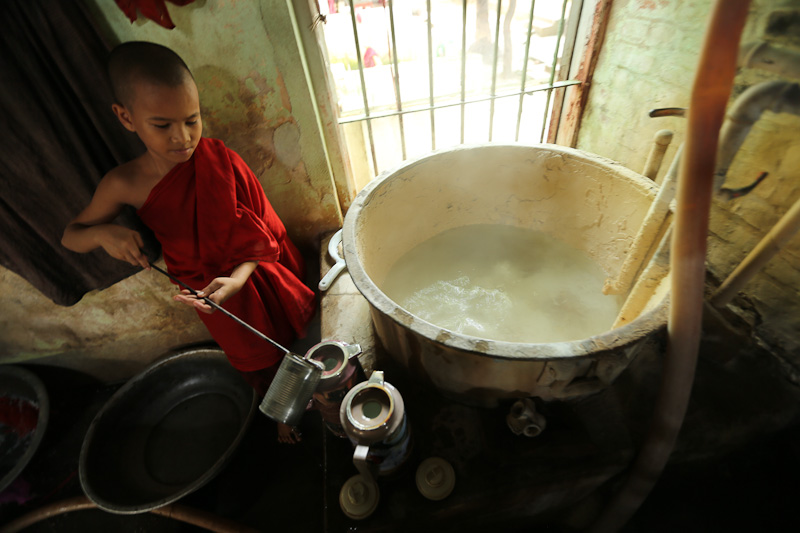
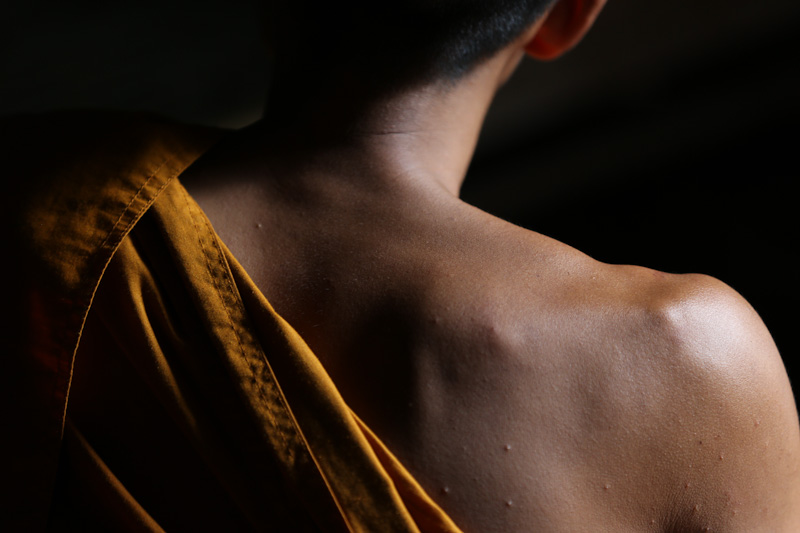


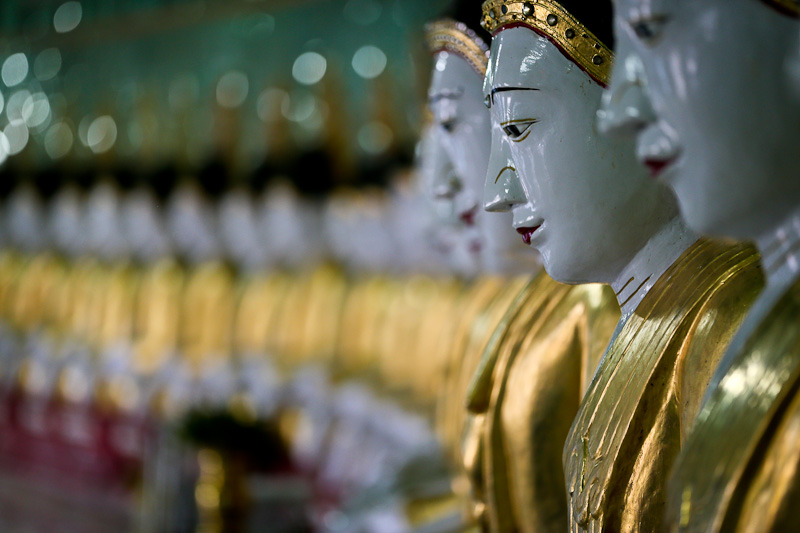

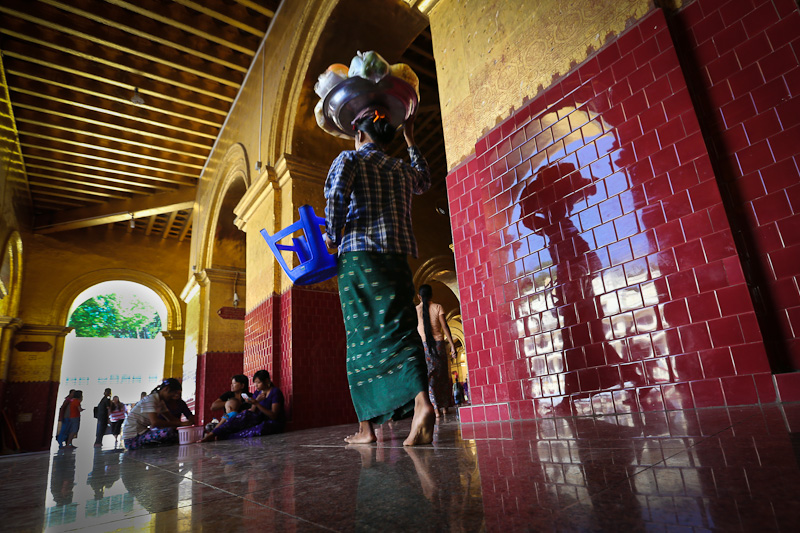
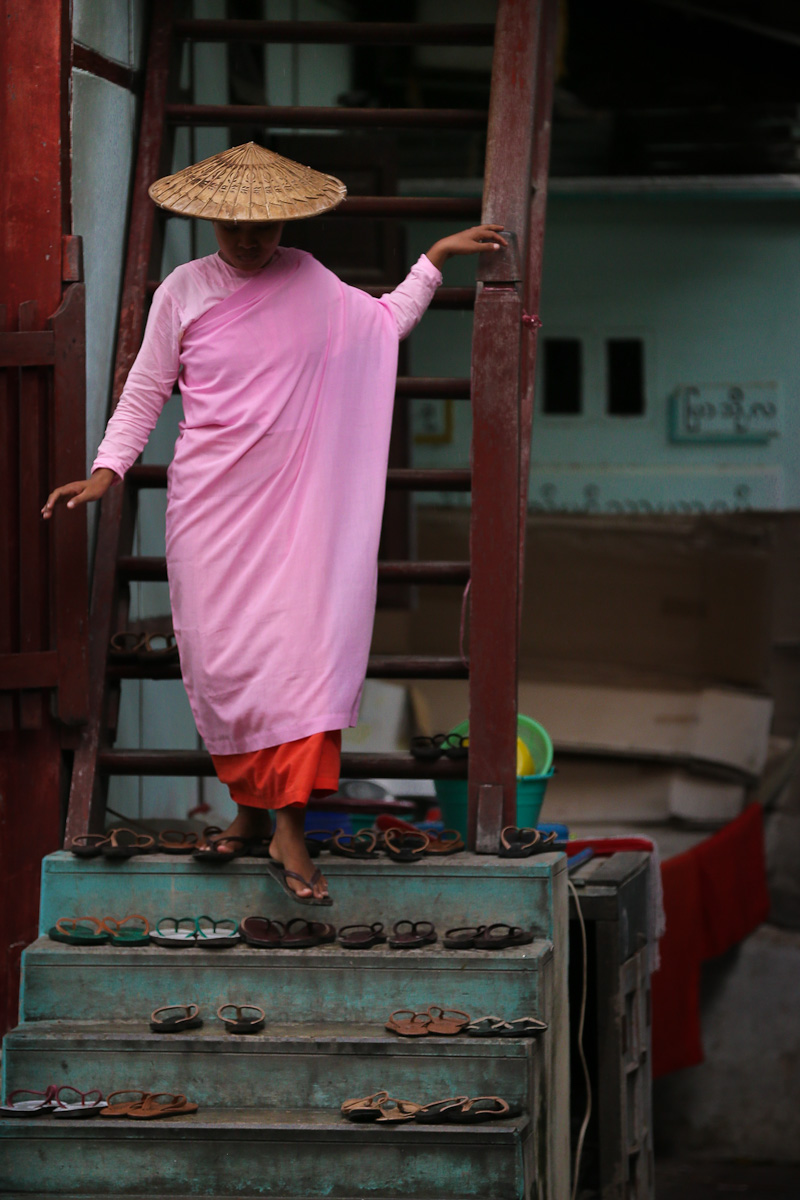
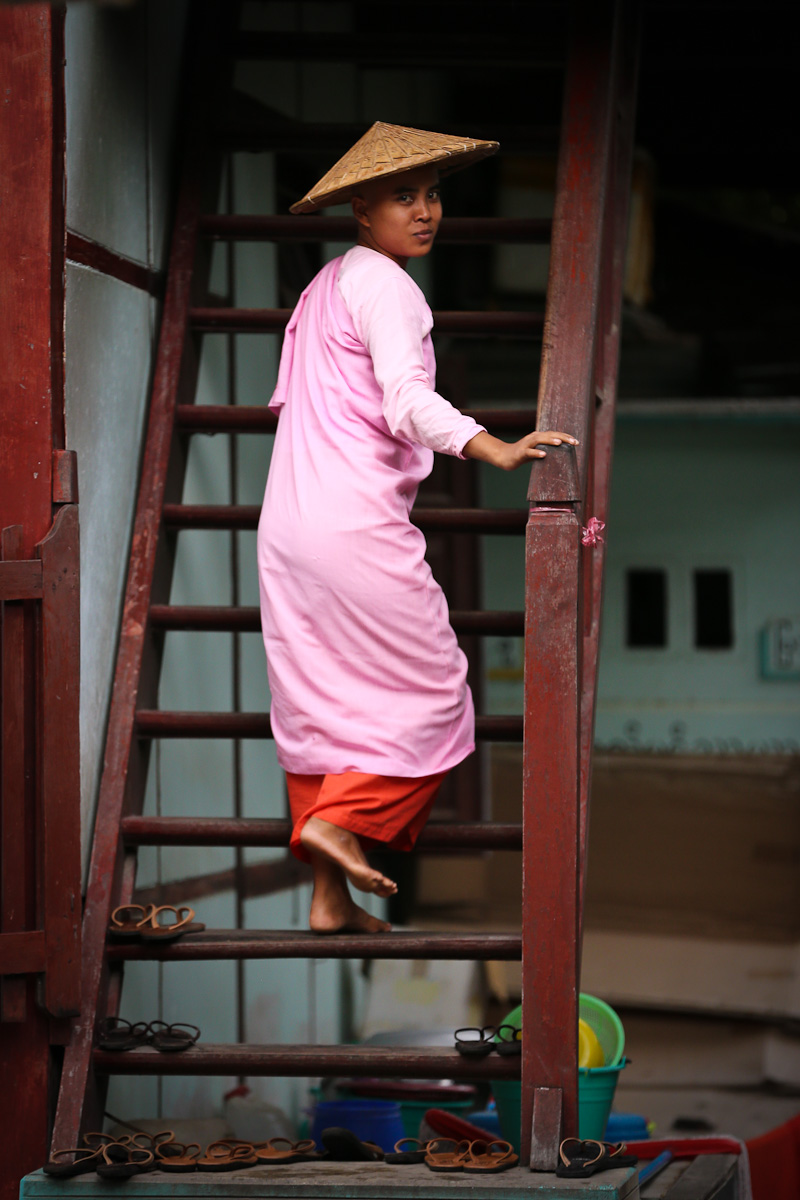

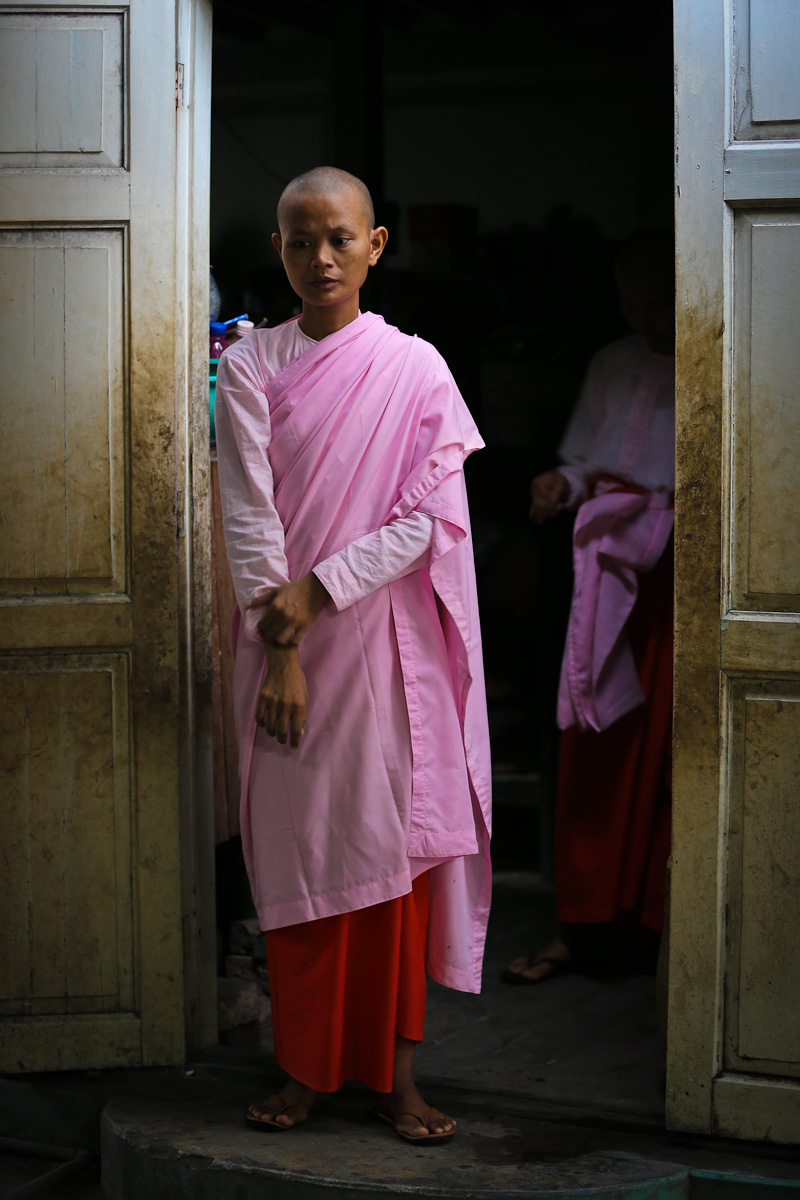
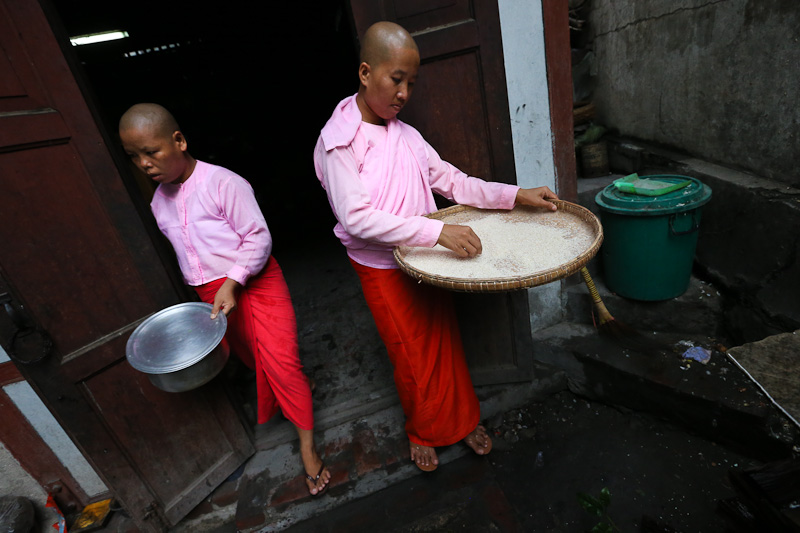






Hey Karl, more great images of course..I especially love the panning shot where the one monk is walking in the opposite direction of the queue of monks. Have a great time in Myanmar! Catherine
Thanks Catherine! As you know from experience, panning can add an interesting dimension to images, and when one subject is moving in the opposite direction from others, the effect is “amplified”. I’ll be posting more Myanmar images over the coming days, so thanks for checking them out! Cheers, Karl